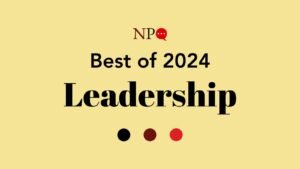
While news outlets nationwide continue to shed jobs, an association originally formed for alternative newsweeklies has seen a 50 percent growth in membership in the last year and a half.
Over the past 18 months, AAN Publishers, formerly known as the Association of Alternative Newsweeklies, has bucked the news industry’s seemingly endless contraction by increasing memberships from 80 to 120.
Executive Director Todd Stauffer, cofounder of a now defunct alternative newsweekly in Mississippi called the Jackson Free Press, said that the small nonprofit association has grown despite years of devastating media cutbacks because of its collaboration with two other media associations: the National Newspaper Publishers Association, a trade association of more than 200 African American-owned newspapers, and the National Association of Hispanic Publications to form the Fund for Equity in Local News.
[AAN Publishers] has bucked the news industry’s seemingly endless contraction.
The coalition has given their members access to highly sought-after Google News grants, raising money for a segment of the American media landscape that Stauffer noted is often overlooked in the discussions about journalism’s economic collapse.
When policymakers, philanthropists, and others talk about saving the news, Stauffer said they’re often focused on the “dying dailies”—like Mississippi’s Clarion Ledger, which the Jackson Free Press was founded to supplement—or the “sexy startups” that promise to revolutionize the industry.
But Stauffer added that there’s a whole other class of valuable news outlets between those two poles that get routinely bypassed in the conversation: scrappy alternative weeklies, publications focused on LGBTQ+ or environmental issues, and newspapers serving Black or Latinx communities.
These outlets—both print and digital—continue to reach audiences and play a critical role in democracy.
So, the three associations came together to create the Fund for Equity in Local News, which gave them the combined clout to secure funding from the Google News Initiative, a program by the tech giant to help newsrooms that continue to be upended by Silicon Valley.
These outlets continue to reach audiences and play a critical role in democracy.
Sign up for our free newsletters
Subscribe to NPQ's newsletters to have our top stories delivered directly to your inbox.
By signing up, you agree to our privacy policy and terms of use, and to receive messages from NPQ and our partners.
In 2023, the three associations, with Google’s backing, launched the Transformation Tech program, where members of the groups can apply for training to help them transition from print to digital revenue streams.
Outlets that complete the program receive $20,000 from Google to help fund their transition plans.
Stauffer said access to that money has enticed news outlets to join AAN Publishers when they might not have considered it otherwise. The Transformation Tech program is scheduled to end in December 2024.
“The Google News Initiative has been huge in helping us through this cycle,” Stauffer said.
Members of AAN Publishers…are not beholden to shareholders while they serve their communities.
Stauffer added that running AAN Publishers, which had just over $300,000 in total revenue in 2022, according to the most recent Form 990 available for the nonprofit on GuideStar, is “not a super-heavy lift” given its small size. His focus clearly is on the future of the organization’s member news outlets, which he said need to be resilient to navigate America’s rapidly changing media environment.
But he noted that the for-profit members of AAN Publishers have an advantage when it comes to tapping philanthropic interests for help. For-profit news organizations don’t need to ask for general operating revenue like nonprofit newsrooms typically do. Instead, they can seek funding for a specific reporter or coverage of a specific topic—a deal philanthropists may be more likely to accept because then they can point to precisely where their funding went.
It’s savvy moves like that that make Stauffer bullish on the members of AAN Publishers. “I’m very proud of the AAN Publishers,” he said, noting the power and necessity of news outlets that are not beholden to shareholders while they serve their communities.












